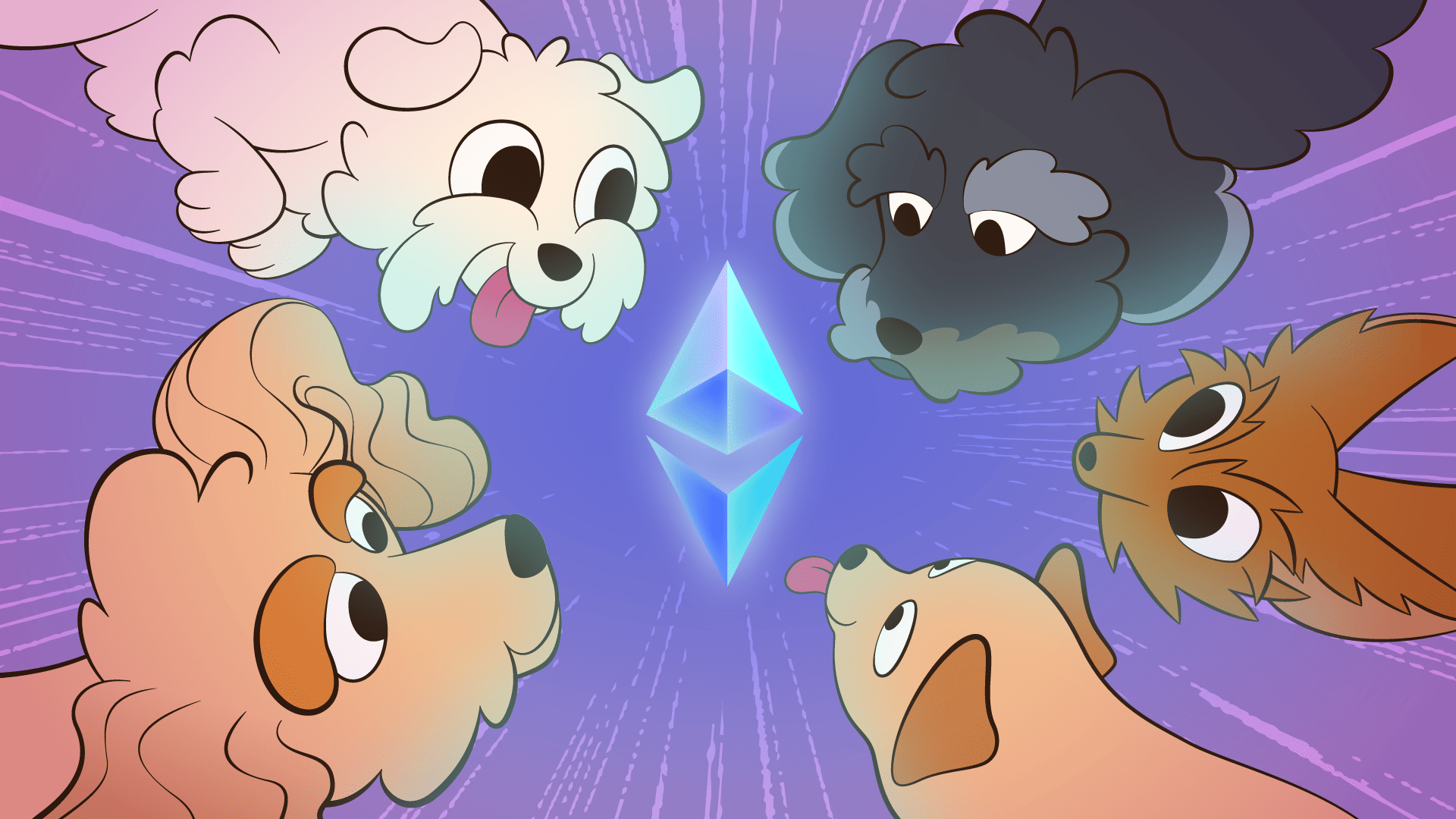You’ve probably heard the buzz about cryptocurrencies, like Bitcoin and maybe even Ethereum. I’d like to formally introduce non-crypto people to what I believe will quickly become a very important part in all of our lives. It’s called the Ethereum Network or Ethereum Blockchain.
An Intro…
When I first discovered Ethereum, my mind went straight to the Matrix movies. If you’re familiar, then you know it’s about machines taking over humanity and collecting body energy of enslaved humans in battery capsules to charge up their supercomputer, the Matrix.
If you think of the Ethereum network as the Matrix supercomputer, then you can see how it’s possible for 10,000+ individual computers to provide exponential computing power via the network, even when they are scattered all over the globe (one even orbiting around Earth via the International Space Station; Thank you to Elon Musk for setting that one up).
The Basics
Let’s start with a very basic understanding of the Ethereum network…
The Ethereum Network is typically described as an open-source, peer-to-peer, decentralized public blockchain-based distributed ledger which features smart contract functionality.
Wow, that’s a mouthful! Let’s pause right here and break it down before I lose anyone, here:
- Open source = Anyone is allowed to download, modify and redistribute the software.
- Peer to peer = No intermediary involved; I can send something directly to you digitally. I don’t need to ask my bank to send the money from my bank account to your bank account.
- Decentralized = No one entity oversees the network as it’s truly not centralized or controlled by any one company, government or other intermediary.
- Public = This means it’s open to the public to use. All you need is an internet connection and a crypto wallet (more on that later).
- Blockchain-based = Every individual transaction that occurs on the Ethereum network gets boxed into what are called “blockchains”, a technology that was first discovered by Satoshi Nakamoto in 2008 when he created Bitcoin. These blocks of transactional data are linked to each other in a systematic process allowing anyone to openly view any transaction that has ever been completed on the network, meaning, this information is available for eternity in a chronological fashion.
- Distributed (public) ledger = This is Ethereum’s format of distributing a copy of every single transaction to every computer on the network. This ensures that everyone on the network always knows the current status of everyone involved. The process can be a very energy-expensive which is why the founders of the Ethereum network are currently building Ethereum 2.0, which can process many more transactions, faster with less energy usage. It should go live sometime before year end 2021.
- Smart contracts = This is a computer code that is designed to work like a vending machine: put money in, press button of item you want, and if all agreements are met, the machine drops your cold Pepsi down the shoot to be retrieved below. If someone puts in 25 cents instead of 50 cents, the obligation hasn’t been met so the machine will not dispense. Smart contracts are essentially the mechanism that becomes the third party – in this case, the third party is simply a standardized code.
The Roots of Ethereum
Ethereum was created in 2015 by Vitalik Buterin, who at the time was just 19 years old. He wanted to take what he learned from Bitcoin’s peer-to-peer payment system that ultimately created a new asset class called, “cryptocurrencies”. They are associated with blockchains and meant to provide incentives to process transactions.
His idea was to build a general-purpose blockchain that would be publicly available to anyone in the world. This aspect is important because Ethereum is designed to be the base protocol rather than an individual project itself. Thus, the Ethereum team’s slogan: “we have no features”.
The Ethereum Blockchain
The Ethereum blockchain can be utilized as a peer-to-peer money system with its native currency (ETH), but it can also run decentralized applications, or dapps. They are new specialized applications designed to tap into the power of the Ethereum supercomputer, where everyone building on the Ethereum network can build off of one another’s application. So, if someone develops a great dapp, another can then build off from their success. This process should create an ever-increasing capability for these d-apps as time goes on.
Tokenization on the Ethereum blockchain is the process of digitally representing a real asset on the distributed ledger. This is one of the key features of Ethereum. The blockchain records who owns what and how many of every token are on the blockchain.
The blockchain also records all transfer data. For example, if I own 10 ETH and I transfer you 1 ETH, the blockchain will immediately record that I now only own 9 ETH and you now own 1 ETH. This means duplicated transactions don’t occur!
Tokens on the Ethereum blockchain have three main standards (blueprints for creating a token):
- ERC-20: for creating fungible tokens that have similar properties to bitcoin.
- ERC-721: for creating non-fungible, unique tokens called NFTs
- ERC-1155: a multi-token standard which uses one single smart contract that can create fungible, non-fungible and even semi-fungible tokens
These three standards all have the same base properties that makes ERC-20, ERC-721 and ERC-1155 interoperable.
*Interesting to note*: Ethereum’s native cryptocurrency, ether, was created prior to the ERC-20 token standard developed, so ironically, ETH isn’t directly interchangeable with the very tokens created on its own network. This why sometimes you’ll see something called WETH, which is “wrapped ether” – meaning it’s been converted into a form of eth that can transact directly with ERC-20 tokens.
Now that you have the gist of how the Ethereum blockchain works and how it’s constructed, let’s talk about how one connects to the Ethereum network.
Crypto Wallets
A crypto wallet is necessary in order to:
- Own an NFT
- Hold some ether
- Trade some Ethereum-based tokens
- Use the d-applications.
An Ethereum-based wallet, such as a Coinbase Wallet or a Meta-Mask Wallet, is what connects the user to the blockchain network. It’s also how the network keeps track of all transactions that occur on it. Since everyone involved has a wallet and the wallet connects to the blockchain, the blockchain keeps track of everyone’s transactions. This means, you’ll know if a token has already been given to someone else.
It’s important to note how crypto wallets work:
- Crypto wallets are a secure blockchain-based tool that allows the owner of the wallet to store digital items from the blockchain.
- Cryptographic wallets are extremely secure since they use a two-way security measure utilizing both a public and private key
- In order to open a wallet both the public wallet address and the private wallet address (or password) needs to be securely entered
- The public wallet id is what you can freely give out to anyone who wishes to send your wallet a digital token
- The private wallet id is what you should NEVER share with anyone (other than your beneficiaries) and it should be hand-written on piece of paper and stored in a very safe place (fire-proof safe is a good place or bank safety deposit box)
Conclusion
As you can see, There is a lot we can expect from the Ethereum blockchain very soon. I strongly believe it’s the next major milestone in humanity’s technological evolution.
“I’m on a mission to level up the American people’s knowledge of money and wealth. With the new Incentive App, we are putting the power of realtime financial knowledge in the hands of the people!”
-Virtual Dan












